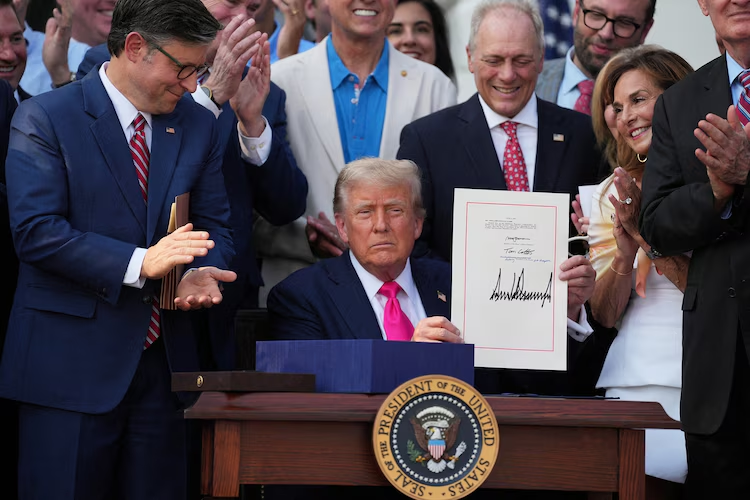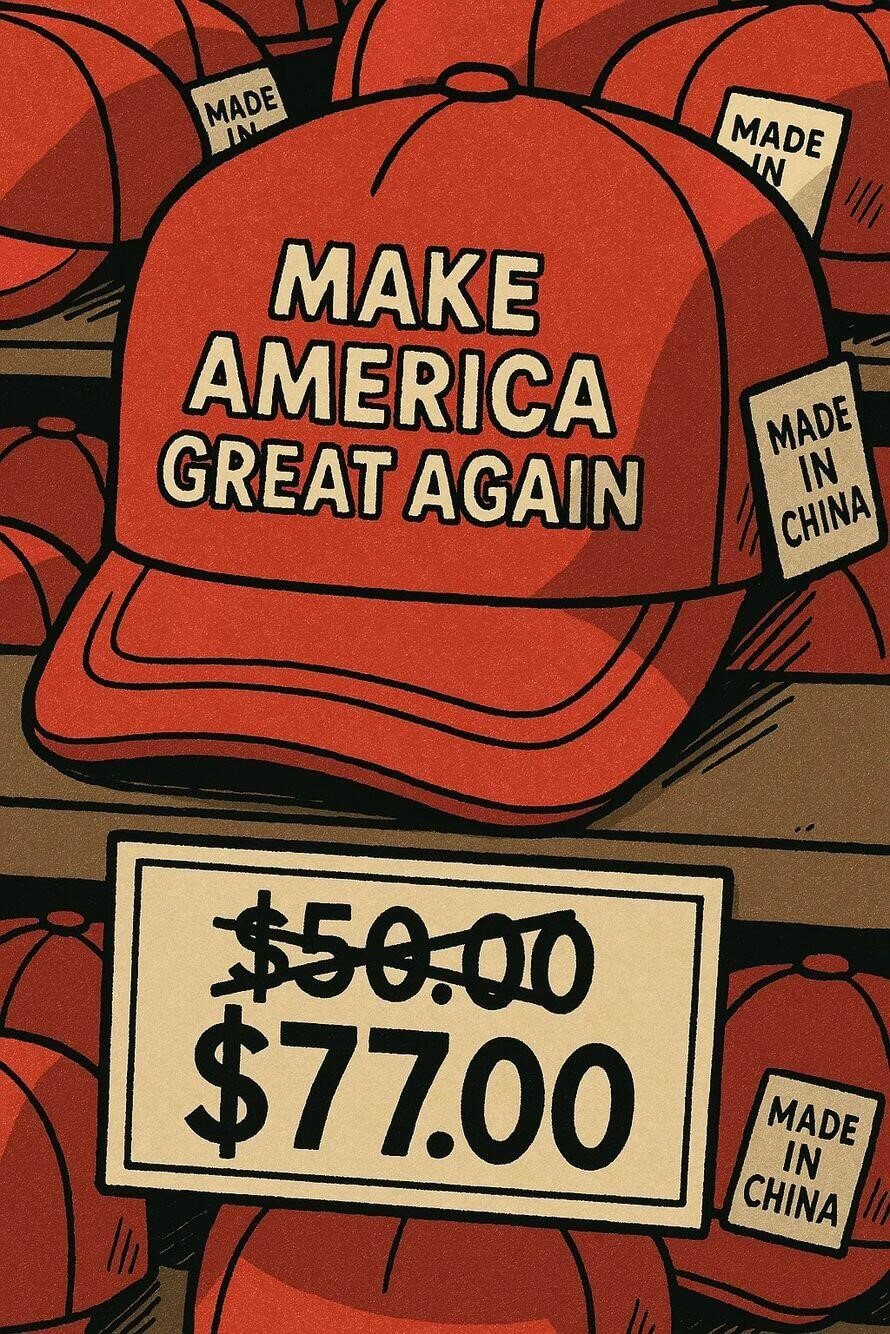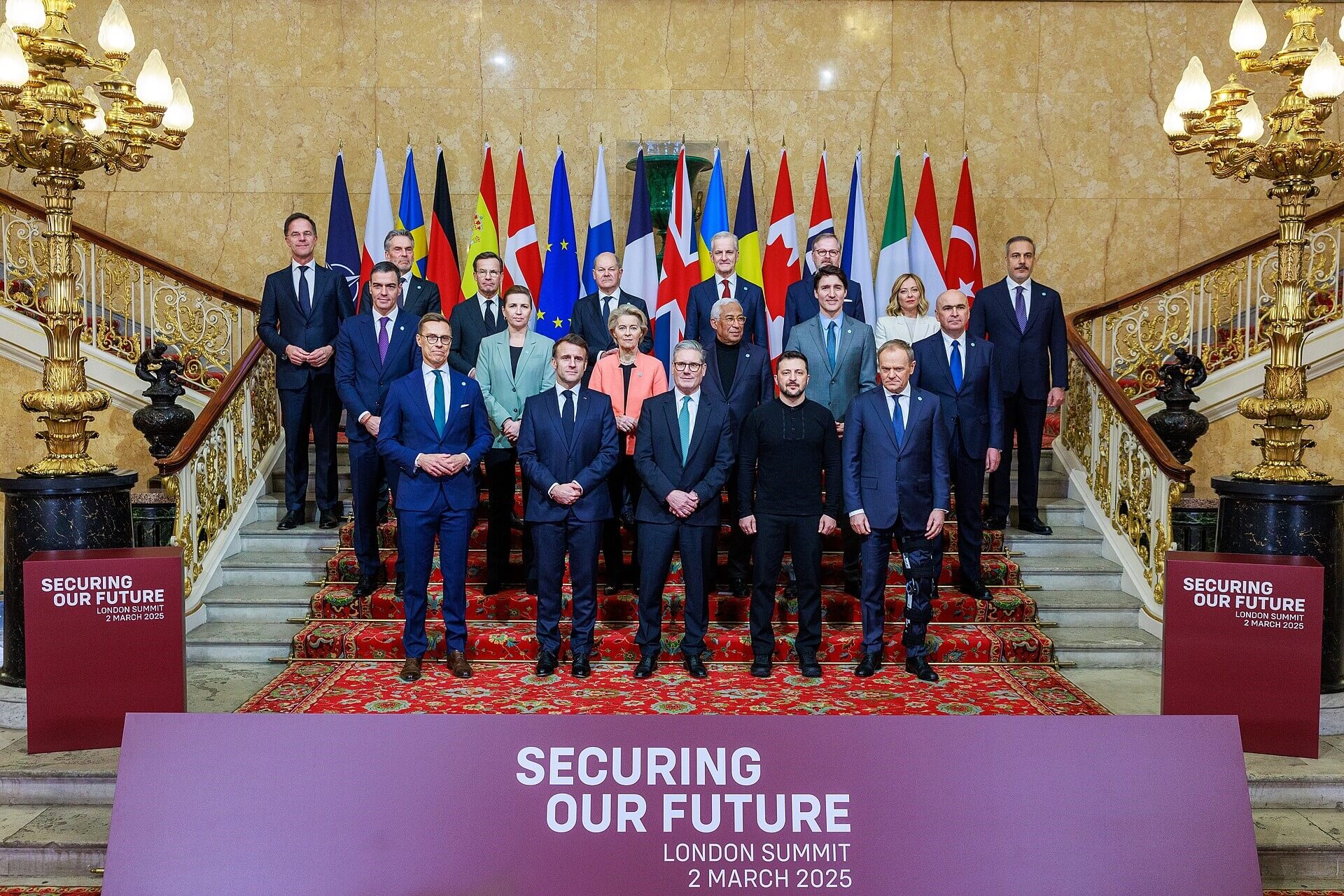President Trump wanted Congress to pass his signature budget bill (the One Big Beautiful Act) ahead of the July 4 celebrations and it indeed did so. With the US government deficit set to increase sharply over the coming years, the pressure to generate income from non-US sources and/or to reduce international costs is growing. Domestically, Donald Trump has intensified his vilifications of the Federal Reserve chairman, urging him to proceed rapidly with rate cuts and hence reduce the interest burden on – fast-expanding – US sovereign debt.
It is estimated that the “Big Beautiful Bill” just voted by the US Congress will increase the federal deficit by USD 3.5 trillion over the next decade. Absent other substantial revenue-generating or cost-cutting measures, financial markets are likely to question the sustainability of US sovereign debt at some point. Which is no doubt why President Trump has sent letters to numerous countries – mainly Asian – warning them of additional import levies starting in August. He has also threatened BRICS member countries with an extra 10% tariff.
There will probably be some form of retaliation, although at this point everybody – including the European Union (EU) – seems very much afraid of Uncle Sam. Not wanting the situation to escalate into a full-blown global trade war is quite understandable, but accepting such taxing measures without complaint would be surprising in our view. Active lobbying by industrial companies might explain the current willingness of political leaders in Europe and elsewhere to pay a higher price for access to the US market, but how international producers will be able to remain competitive when faced with both additional US tariffs and a persistently weak US dollar is a mystery to us. As indeed is the equity markets’ apparent indifference to the entire tariff issue.
From a European perspective, surrendering to Trump administration trade pressures could also reflect concerns about a possible US withdrawal from Ukraine, which would force the EU to step up its financial/military support to Kiev – despite not being currently able, and sufficiently united, to do so. Now that Donald Trump has failed to persuade Vladimir Putin to enter into peace negotiations, he is evidently losing interest in the Ukrainian situation.
His line of thought on the NATO alliance appears similar: the US has paid too much for too long, so now it is time for other members to increase their contributions. The new standard (not applicable to the US!) has been set at 5% of GDP and accepted by all, with the proviso that 3.5% only may be used for direct military spending and the remaining 1.5% for investments in related infrastructure. Still, EU members will have a tough task in achieving that level of spending, not to mention simultaneously deploying the all-important “Green deal” for energy transition, without jeopardising their social security systems.
Within the EU, Germany is not only a historical growth engine but also one of the countries with the lowest debt burden. Current public debt stands at ca. 60% of GDP, well below the European average of ca. 80%. Assuming the German government has sufficient access to the bond market, it is in a position to subsidise the energy component of its industrial producers by ca. 50%, in addition to higher military spending, providing domestic companies with a clear competitive advantage over their European peers. At the same time, there are evident signs that Germany is increasingly taking control of EU institutions, which is not well received by some other member states.
Ultimately, where will all these constantly moving parts lead the world to? The Trump narrative is simple, not to say simplistic: increase US production/workforce and let other countries foot the bill. The problem with this line of thinking is that the measures being taken have consequences that are both complex and unpredictable. In fact, the current uncertainties and incessant changes of course are so great that making informed predictions is very difficult. What does seem clear is that world trade volumes are set to shrink and their patterns to change. Tensions between the US and China are very serious, but one should not forget that 75% of global trade flows do not involve the US. Moreover, over time, enemies of enemies can become friends, making for unforeseen changes in the geopolitical landscape.
From an investment perspective, a capital-preserving approach thus remains warranted. Within equities markets, greater government spending (be it on defence, on infrastructure or on the energy transition) will undoubtedly benefit many companies. Hence our suggestion to maintain overall equity exposure, albeit in a very diversified manner, with a preference for multinational companies trading at acceptable valuations. The US risk premium has virtually disappeared, even when using an equally weighted version of the S&P 500 index (i.e. not biased by the richly valued US IT giants), but is still present in Europe, explaining our gradual geographic shift in portfolios. As regards fixed income exposure, we continue to recommend avoiding long-term government bonds, given deteriorating public finances worldwide, and prefer bonds issued by (once again) multinational companies with strong balance sheets. Last but not least, hedge funds remain an important part of our asset allocation, with a shift lately towards more market-neutral strategies.









